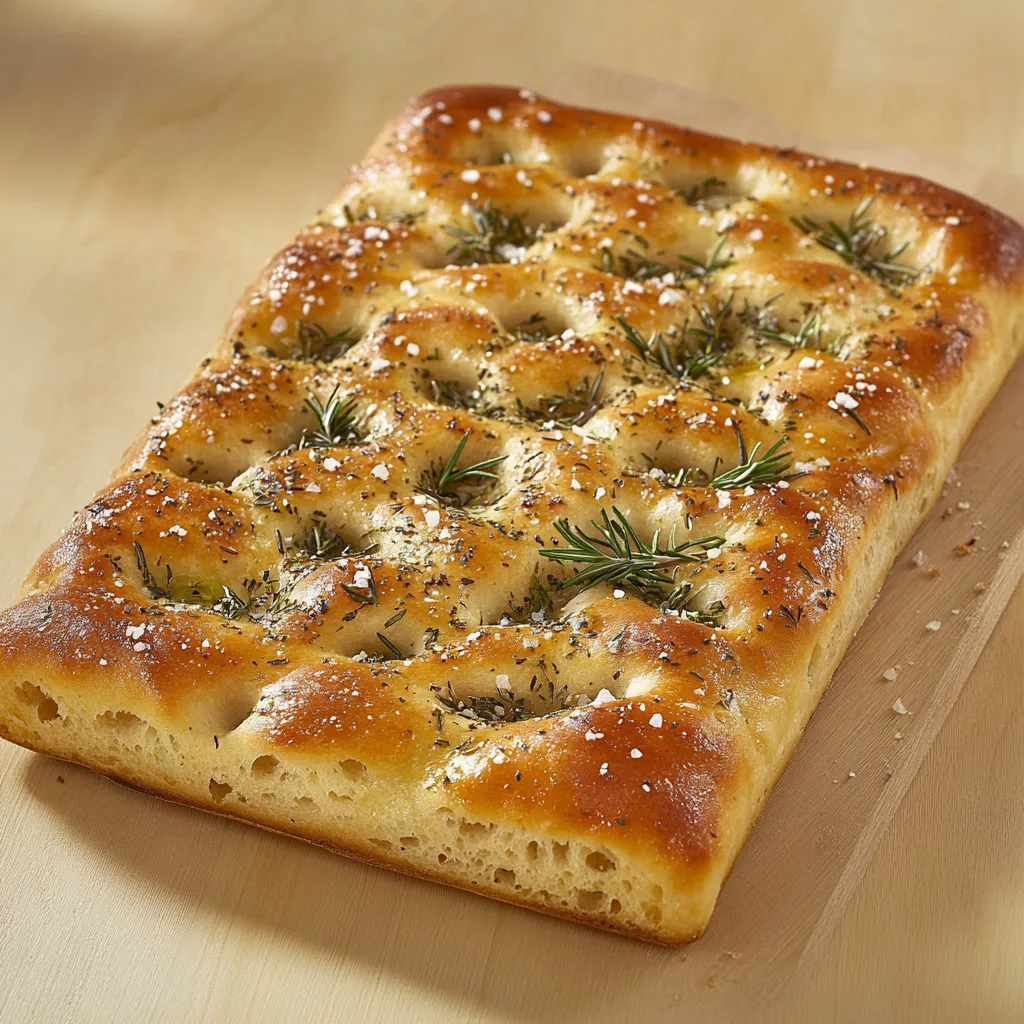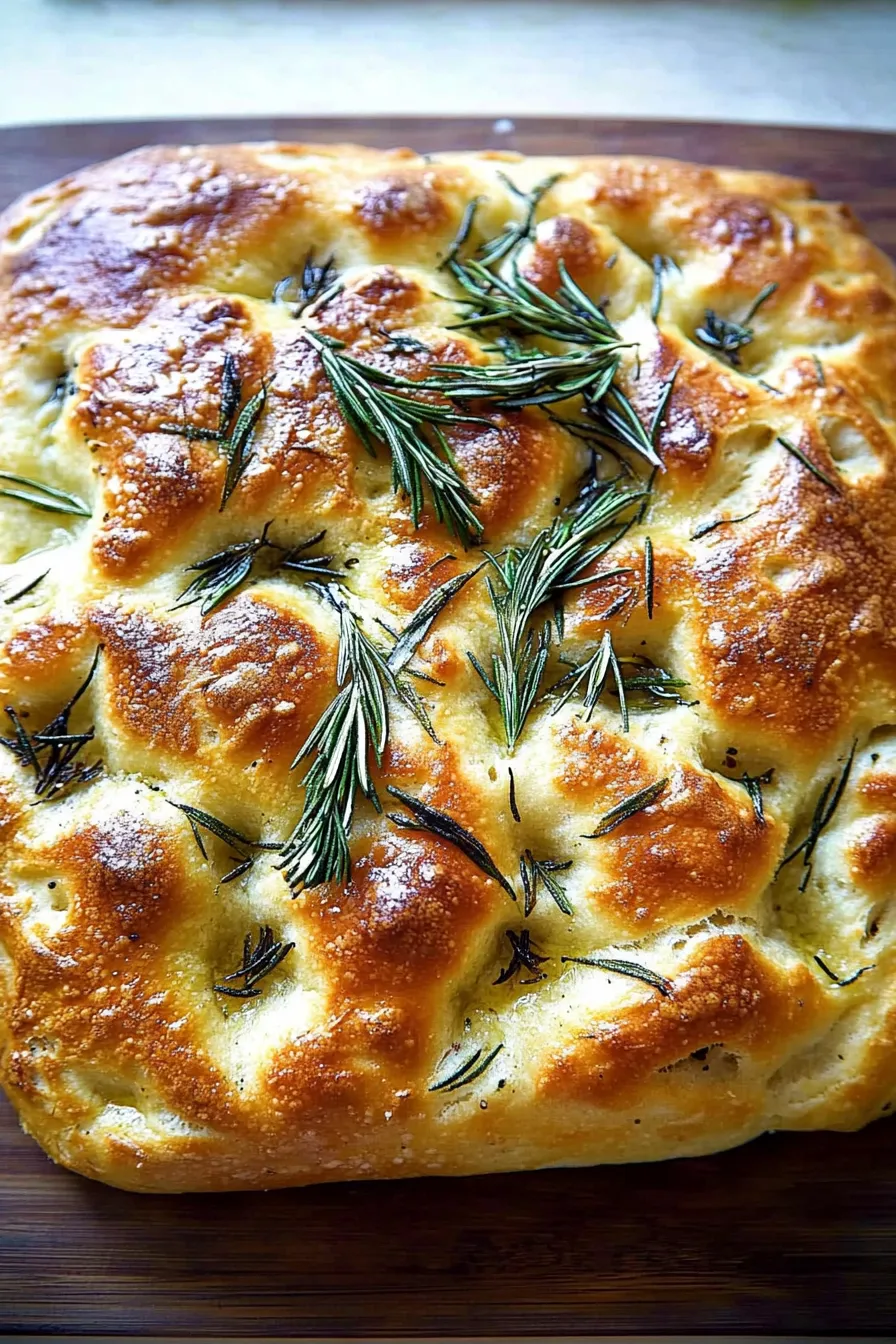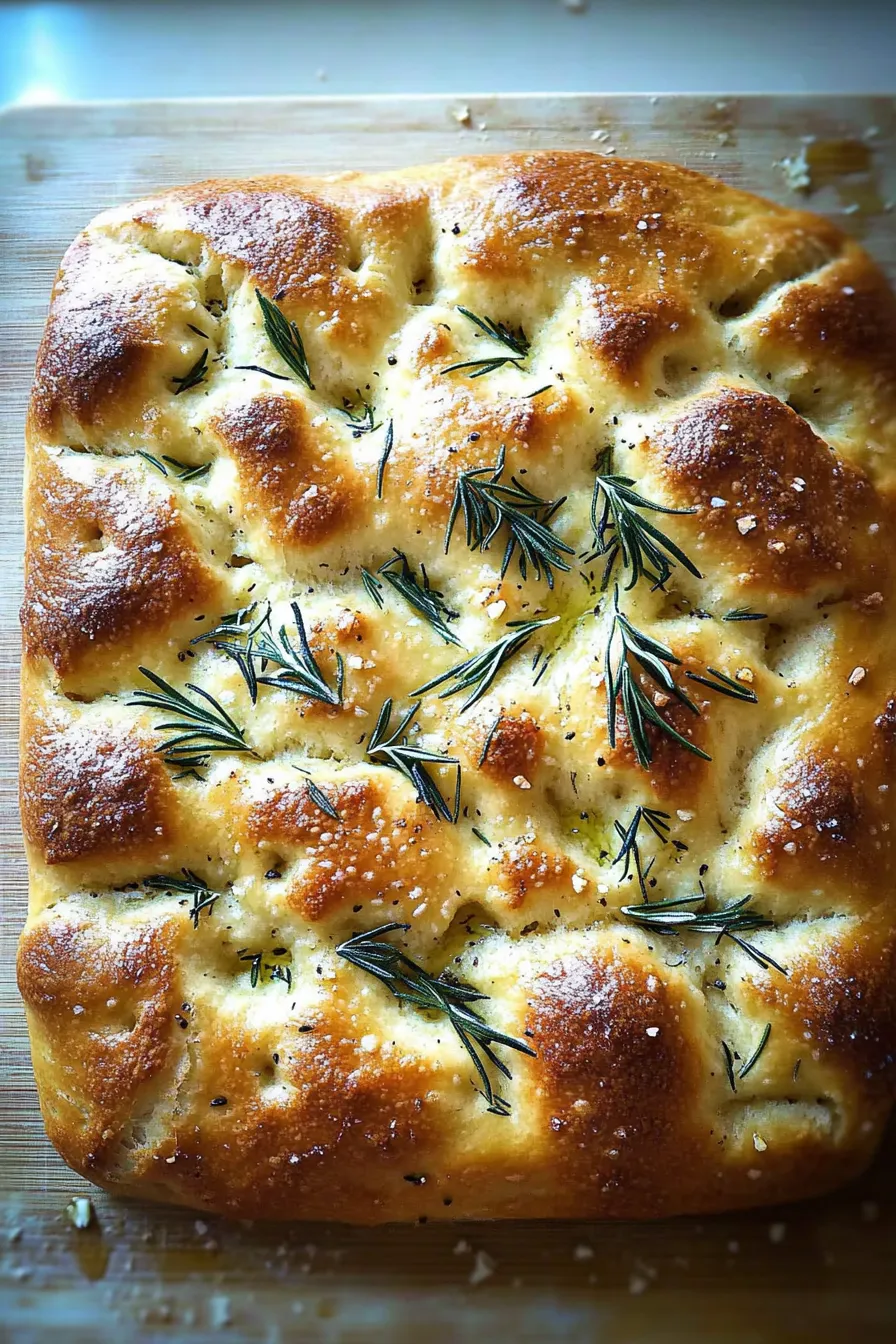 Pin it
Pin it
This pillowy homemade focaccia recipe transforms just four basic ingredients into a bakery-worthy Italian bread with minimal hands-on effort. The secret lies in cold fermentation, giving the dough time to develop exceptional flavor and that signature airy texture that makes focaccia so irresistible.
I discovered this method years ago when trying to replicate my favorite Italian restaurant's focaccia. After dozens of attempts, this overnight refrigeration technique changed everything. Now my family requests this bread weekly, and guests always ask for the recipe.
Ingredients
- All purpose flour or bread flour: creates the perfect structure. Bread flour delivers extra chewiness, while all purpose produces a slightly more tender crumb
- Kosher salt: enhances flavor throughout the dough. Diamond Crystal brand works wonderfully here
- Instant yeast: provides reliable rising without the need for proofing. SAF brand is my personal favorite for consistency
- Lukewarm water: activates the yeast without killing it. The specific temperature matters, so follow the mixing instructions
- Olive oil: contributes richness and that authentic focaccia flavor. Use a good quality one you enjoy the taste of
- Flaky sea salt: creates that perfect salty crunch on top. Maldon brand creates beautiful texture
- Optional rosemary: adds classic Italian flavor. Fresh works best but dried will do in a pinch
Step-by-Step Instructions
- Make The Dough:
- Whisk together flour, salt and instant yeast in a large bowl until fully combined. Add lukewarm water and mix with a rubber spatula until you have a sticky, shaggy dough ball with no dry spots remaining. The dough will look quite wet compared to other bread recipes. Coat the surface lightly with olive oil, cover with a damp towel or plastic wrap, and immediately refrigerate for at least 12 hours or up to three days. This cold fermentation develops flavor and texture without requiring kneading.
- Prepare The Pans:
- Line baking pans with parchment or thoroughly grease them with butter and olive oil to prevent sticking. This double protection is worth the effort as focaccia can be particularly prone to sticking. Pour olive oil in the center of each prepared pan. The oil might seem excessive but creates that signature crispy bottom.
- Shape The Dough:
- Using two forks, gently deflate the cold dough by pulling it from the sides into the center, rotating as you work. Split the dough into two equal portions if making smaller loaves. Transfer each portion to a prepared pan, rolling to coat completely in oil. Let rest uncovered at room temperature for 3 to 4 hours until noticeably puffy. The dough should nearly double in volume and look pillowy.
- Dimple And Bake:
- When dough has risen, preheat oven to 425°F. With oiled fingertips, press straight down into the dough creating deep dimples throughout the entire surface. These characteristic indentations will hold oil and toppings while creating the classic focaccia texture. Drizzle additional olive oil over the top, sprinkle generously with flaky sea salt and optional rosemary. Bake until deeply golden on the bottom and lightly golden on top, about 25 to 30 minutes.
 Pin it
Pin it
The flaky sea salt is my absolute favorite element of this recipe. I first tried Maldon salt on a culinary tour through Italy, where our guide showed us how those delicate crystals make all the difference when they hit your tongue between bites of pillowy bread. My children now help me sprinkle it on, and they've become little salt connoisseurs in the process.
The Magic Of Cold Fermentation
The refrigeration step might seem unusual, but it's truly the secret to exceptional focaccia. Cold temperatures slow yeast activity while enzymes continue breaking down starches into sugars, developing complex flavors impossible to achieve with quick methods. This slow fermentation also creates those beautiful air pockets throughout the dough. While you can make this bread in about 3 hours start to finish if needed, allowing for the overnight rest yields dramatically better results with virtually no extra effort.
Endless Topping Possibilities
While classic sea salt and rosemary create a perfect traditional focaccia, this bread becomes a canvas for countless variations. Try pressing halved cherry tomatoes, thinly sliced red onions, or oil-packed sun-dried tomatoes into the dimpled surface before baking. For a sweeter variation, sprinkle with thinly sliced apples and rosemary, then drizzle with honey after baking. My family favorite combines thinly sliced lemons, rosemary and a light dusting of red pepper flakes for brightness and gentle heat.
Storing And Reviving
Focaccia tastes best the day it's made, but proper storage preserves its quality. Once completely cooled, store in an airtight container at room temperature for up to three days. The bread will soften over time, but reheating at 350°F for about 15 minutes wonderfully restores the exterior crispness. For longer storage, wrap cooled focaccia tightly in plastic then foil and freeze for up to three months. Thaw at room temperature then reheat as directed for freshly baked flavor and texture.
 Pin it
Pin it
Frequently Asked Questions
- → How long should the dough rest?
The dough should rest for 18-24 hours in the refrigerator for optimal flavor and texture. Alternatively, a 3-hour quick method works too.
- → What type of flour works best?
All-purpose or bread flour both yield great results. In humid climates, using bread flour is recommended for better consistency.
- → Can I use different pans?
Yes, you can use two 9-inch pie plates, a 9×13-inch pan for thicker focaccia, or a 13×18-inch sheet pan for thinner focaccia.
- → How do I prevent the dough from sticking?
Generously grease your pans with butter or oil to prevent sticking. Nonstick spray also works well for certain pans.
- → How should I store leftover focaccia?
Store it in an airtight container at room temperature for up to 3 days or freeze it for up to 3 months. Reheat at 350ºF for 15 minutes to refresh.
